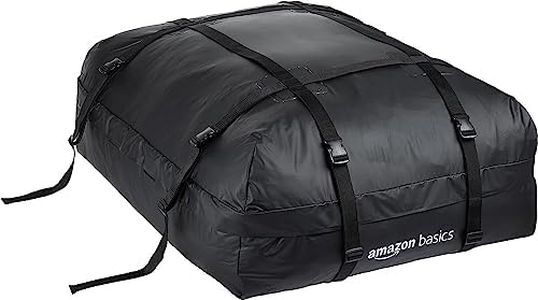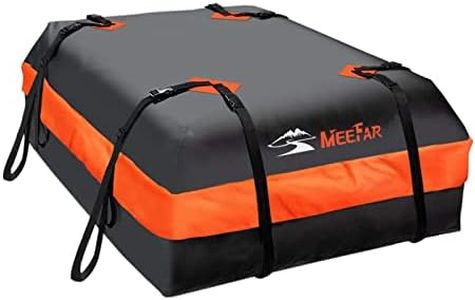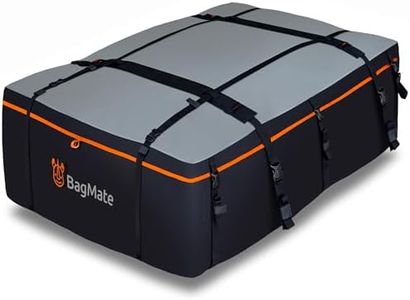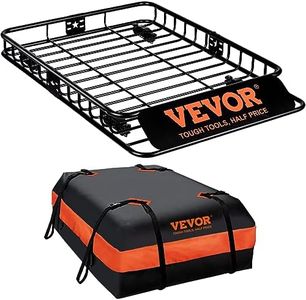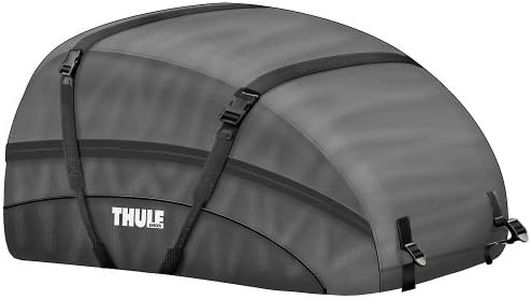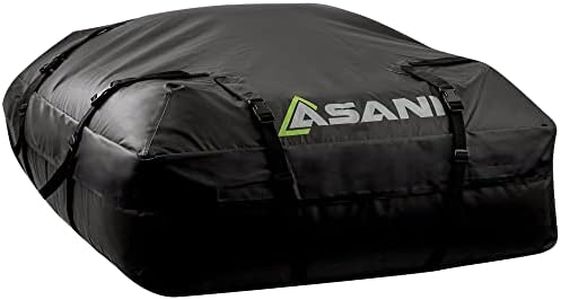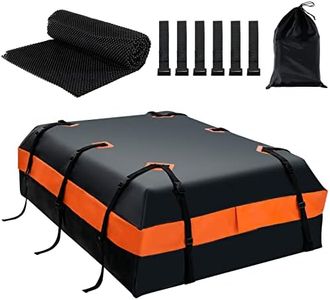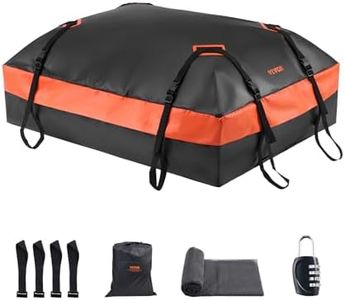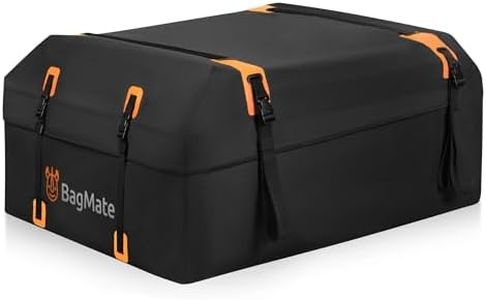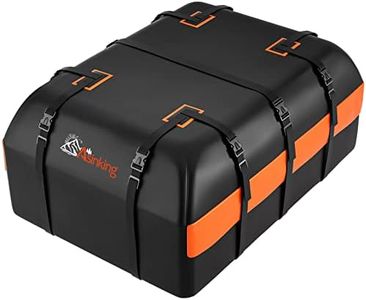We Use CookiesWe use cookies to enhance the security, performance,
functionality and for analytical and promotional activities. By continuing to browse this site you
are agreeing to our privacy policy
10 Best Rooftop Cargo Carriers
From leading brands and best sellers available on the web.Buying Guide for the Best Rooftop Cargo Carriers
Choosing the right rooftop cargo carrier for your vehicle can make your travels much easier and more comfortable by providing extra storage space for bulky items. When picking a rooftop cargo carrier, it's essential to consider how much gear you typically need to carry, your vehicle's compatibility, and how often you'll use the carrier. Pay attention to a few key features that will affect the fit, usability, and convenience of your rooftop cargo carrier. Knowing what each feature means will help you make a practical and informed choice for your needs.Capacity (Volume)Capacity refers to how much gear you can fit inside the rooftop cargo carrier, usually measured in cubic feet or liters. This is important because a carrier that's too small might not fit all your belongings, while one that's too big can be bulky and affect vehicle handling. Carriers typically range from compact (around 10-12 cubic feet) to large (18 cubic feet or more). If you pack light or just need extra room for a few items, a smaller size is ideal. For family trips or when carrying large gear like skis or camping equipment, a bigger carrier is more suitable. Think about your usual travel habits and what types of items you’ll most likely transport.
Type (Hard-shell vs. Soft-shell)The type of cargo carrier refers to whether it is a rigid, hard-shell box or a flexible, soft-shell bag. Hard-shell carriers are made from materials like plastic or fiberglass and offer better protection from weather, theft, and road debris. Soft-shell carriers are lighter and can be folded for easy storage when not in use. If you expect to travel in harsh weather or want added security, a hard-shell is a good choice. If you only use it occasionally or want something more affordable and easy to store, soft-shell might be better.
Mounting SystemThe mounting system is how the carrier attaches to your vehicle's roof. Some carriers require your car to have roof racks or crossbars, while others can attach directly to bare roofs. It’s important because compatibility affects safety and ease of installation. Most carriers are designed for cars with crossbars, so check your vehicle before choosing. For vehicles without racks, look for carriers that come with their own mounting straps or fit a bare roof. Make sure the method is secure and suits how often you plan to install and remove the carrier.
Ease of AccessEase of access describes how you get to your items inside the carrier—like whether it opens from one side, both sides, or from the rear. This feature impacts convenience, especially when loading or unloading in tight spaces. Side-opening carriers are the most common, but dual-side or rear-open designs can be helpful if you want to avoid traffic when parked on the street or if you need access from either side. Consider where you'll usually park and load your vehicle when choosing.
Weather ResistanceWeather resistance indicates how well the carrier keeps your belongings safe from rain, snow, dust, and other elements. A weatherproof carrier protects your gear on long drives and during unexpected weather. Hard-shell boxes are generally more water-resistant than soft-shell carriers, but many soft carriers include protective coatings or rain flaps. If you often travel in rough conditions or carry items sensitive to moisture, choose a model with trustworthy waterproofing features.
Security FeaturesSecurity features refer to locks or integrated systems that prevent unauthorized access to your cargo. Some carriers have built-in locking mechanisms while others may rely on external padlocks or zippers. Security is important if you plan to leave items in your carrier while parked in public or overnight. Pick a carrier with sturdy locks if security is a priority for your travels.
AerodynamicsAerodynamics is about how the shape of the carrier reduces wind resistance. Streamlined carriers make less noise, cause less drag on your vehicle, and have a smaller impact on fuel efficiency. Boxy, taller carriers can be noisier and less fuel-efficient. If you plan to drive long distances or at higher speeds, look for a low-profile, aerodynamic model to improve comfort and reduce gas consumption.
Weight LimitThe weight limit is the maximum load a cargo carrier can safely carry, and it's crucial to adhere to this to ensure safety and avoid damage to your car or the carrier. Limits vary depending on the carrier and your vehicle's roof capacity. Always check both the carrier’s and your vehicle’s roof weight limits, especially if carrying heavier gear like camping or sports equipment. Choose a carrier that comfortably handles your typical load needs without pushing maximum limits.
